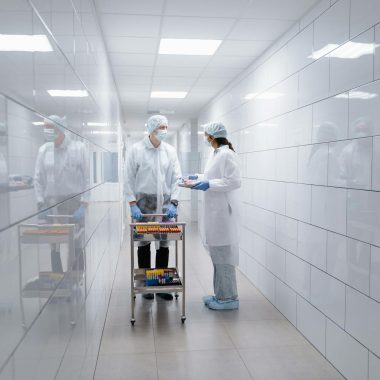Gone are the days when AI was just a futuristic concept – it’s already revolutionizing how we work, and businesses that don’t adapt quickly might find themselves left behind. The workplace is changing faster than most of us realize. Just ask Saiday Mulbah, whose company ECS Virtual Support has been implementing conversational AI solutions for major brands like Disney, Home Depot, and T-Mobile.
The Next Industrial Revolution Is Happening
When asked how work might evolve in the coming decade, Saiday doesn’t hesitate. “It’s going to be a different world with AI here now,” he says. “I think it’s going to be very much focused on us being operators of AI more than us actually doing the physical work.” This isn’t some distant future prediction. According to Saiday, we’re facing a massive transformation “literally within the next six to 12 months.” His comparison to a previous technological revolution puts things in perspective: “We’re right where the industrial age happened, where transition from horse and buggy and physical people doing it to the automobile.” But there’s a key difference this time around. “AI doesn’t get tired, it doesn’t have to take off work,” Saiday points out. “You tell it what to do and it’ll do it for you 24/7.”
Shifting from Doing to Directing
What exactly does this shift from worker to operator mean? Saiday breaks it down with a simple analogy. “You can either walk to the airport or walk to your job. That is, you physically having to do it yourself. Or you can get into a car and operate the car,” he explains. “We’re gonna have to learn how to be drivers as opposed to be walkers.” This doesn’t mean humans will be obsolete – quite the opposite. We’ll need to supervise and direct AI systems, stepping in where human judgment and creativity remain essential. But the nature of work will fundamentally change.
For companies wondering how to maintain the human touch while implementing AI, Saiday has straightforward advice: “Upskilling your employees is going to be the number one thing you want to do.” This means teaching people not just how to use AI tools but how to detect nuances in customer interactions that machines might miss. “Teaching them how to detect all the things that they would normally detect when they’re having a conversation with a customer,” as Saiday puts it. The warning is clear for those who resist: “If people don’t do it quick enough, they will be displaced. That’s the reality of it.”
Rethinking What Attracts Talent
As AI makes operations more efficient across industries, the old ways of attracting talent won’t cut it anymore. “Every business, once they implement AI can essentially make whatever money they want to make,” Saiday says. “It’s going to be extremely profitable for business owners.” This means salary alone won’t differentiate employers. “The value of money doesn’t hold as much value as it did before,” he explains. “Everyone will be able to make the kind of money they need to make.”
So what will matter? According to Saiday, “Creating a culture and setting the vision for where you want your company to go is more crucial than ever.” People will choose employers based on alignment with their personal values and the company’s direction. “It’s going to be more crucial for the business owner to set a clear vision as to where this company will go,” he says. “Those factors will start to be diminished as AI gets implemented.”
Businesses Must Adapt or Fall Behind
Saiday doesn’t mince words about what’s coming. “I think people are underestimating the power of AI and what’s coming,” he says. “I’ve heard AI speak better, clearer, more professionally, and be more effective than I am on the phone, texting, emailing.” The outcome will split businesses into winners and losers. “I definitely think it’s going to create a K-shape environment,” Saiday predicts. “A lot of companies that are behind it, learning it, implementing as quickly as possible, they will scale up. Those who are reluctant or trying to deny this evolution, they’re going to go down.”
Despite the challenges, Saiday sees tremendous potential for positive change. “The pressures of having to be in the office 8 to 5 or work a 40-hour work week will be non-existent,” he says. “Work may just end up taking a couple of hours of our life and then we’ll have full flexibility and autonomy to live the life that we really want.” For Saiday, the future isn’t just about technology – it’s about freedom. And businesses that understand this shift will be the ones that thrive in the AI-powered workplace of tomorrow.
Connect with Saiday Mulbah on LinkedIn to stay ahead of AI-driven workplace trends.







